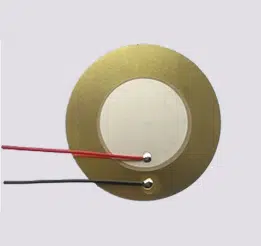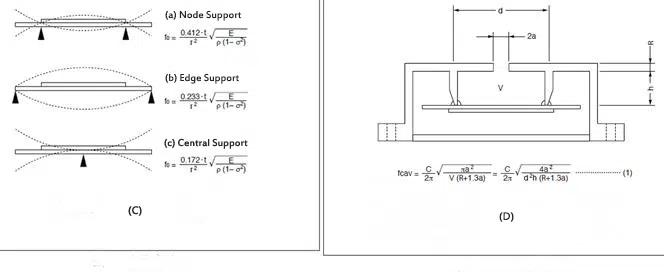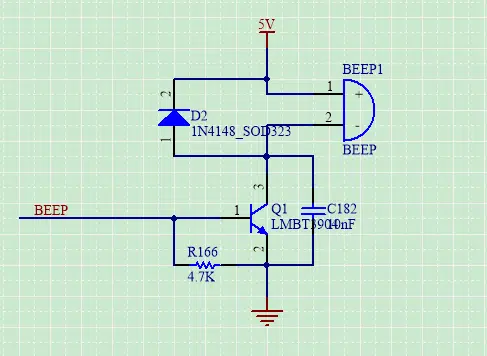Basic Knowledge about Working Principle and Drive Circuit of Piezo Element and Buzzer
Piezoeletric Elements
The piezo element is usually as below picture. Some kinds of piezo elements are without welding cables.

Two vibrating plates in the piezo element convert electrical energy into mechanical energy in an energized state, thus making a sound.
The sounding principle of the buzzer is as follows.
The sound source of the piezoelectric element comes mainly from the piezoelectric vibrating plates. The piezoelectric vibrating plates consist of a piezoelectric ceramic plate with electrodes printed on both sides and a metal plate such as brass or stainless steel.
Using an adhesive, the piezoelectric vibrating plate and the metal plate are bonded together, which is commonly known as a piezo element.

Figure B shows the oscillation system of the piezoelectric vibrating plate. When a DC voltage is supplied between two electrodes of the piezoelectric vibrating plate, mechanical deformation is caused due to the piezoelectric effect. For the piezoelectric element with a distorted shape, the deformation extends in the radiation direction.
The piezoelectric vibrating plate bends in the direction shown in Fig. B(a), while the metal sheet bonded to the piezoelectric vibrating plate does not extend.
In contrast, when the piezoelectric element contracts, the piezoelectric vibrating plate bends in the direction shown in Fig. B(b).
Therefore, when the AC voltage passes through the electrode, as shown in Fig. B(c), the bending shown in Fig. B(a) and Fig. B(b) will be repeated alternately, thus producing sound waves in the air.
In general, the human sound frequency range is approximately 20Hz to 20kHz. Therefore, the piezo elements are mainly used in this frequency range.
Also, the resonant frequency (f0) of the buzzer is generally selected to be in the same range.
As shown in Figure C, the resonant frequency depends on the method used to support the piezoelectric vibrating plate. If the shape of the piezoelectric vibration plate is the same, its value will become smaller in the order of (a), (b), and (c).

However, the sound generation from bare piezoelectric ceramic pieces is small. So a sound chamber, or resonant chamber, is needed. The piezoelectric vibrating plate is mounted inside the resonant chamber to generate high sound pressure (as in Figure D). Using equation (1) (Helmholtz formula), the resonant frequency (fcav) of the resonant chamber in Figure D can be calculated.
Since the piezoelectric vibrating plate and the resonant chamber have appropriate resonant frequencies of (f0) and (fcav), respectively, the sound pressure at a specific frequency can be increased and a specific bandwidth can be obtained by controlling the position of both.
The direct effect of the resonant cavity is to amplify the volume of the sound, which is the same effect as the speaker cavity.
Buzzer
There is a drive circuit built-in type buzzer and an external drive type buzzer. Also named inactive buzzer and passive buzzer.
The difference between active and passive buzzers is the need to drive the output frequency of the pulse generator.
Drive Circuit Difference

From the above analysis, we can conclude that both the buzzer and piezo elements are the same type of component. So the driver circuit is the same, both are using triode to amplify the drive. Please refer to the above circuit diagram.



